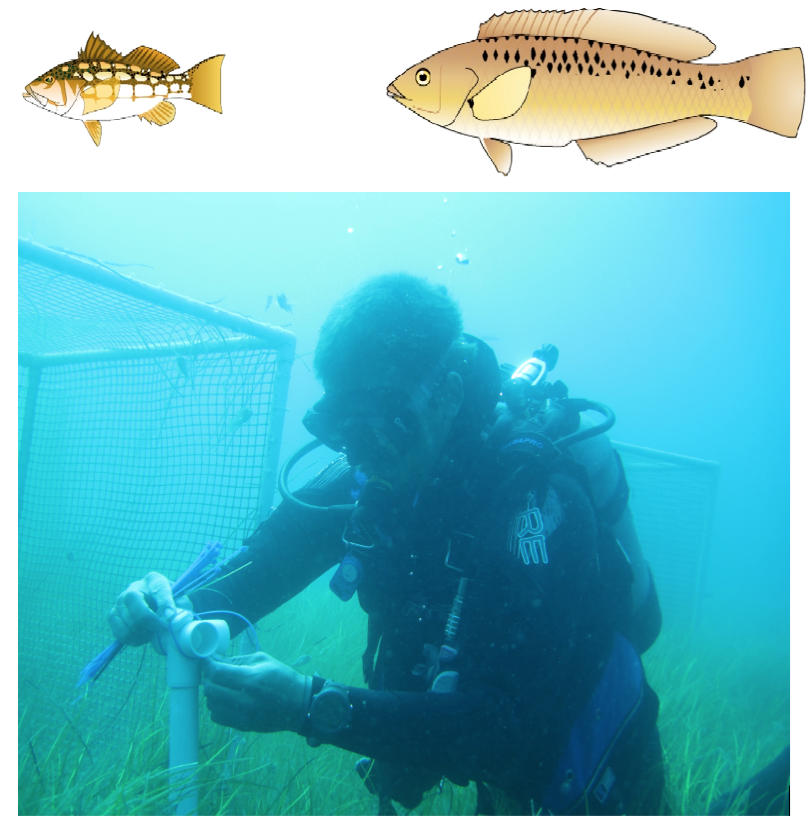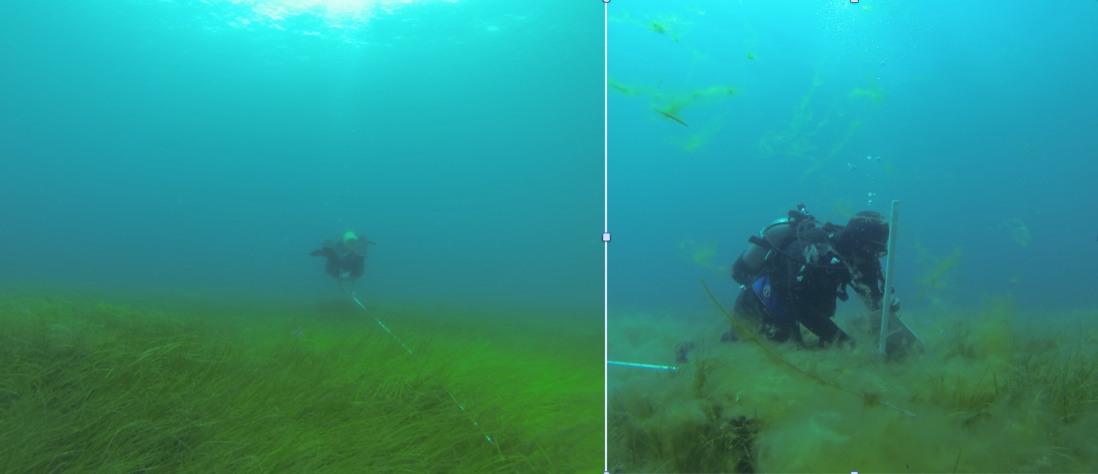By: Russell Dauksis
As a Wrigley Institute Summer Fellow, I did a lot of diving this summer, studying the trophic dynamics of seagrass communities at Catalina Island. Diving all day is a lot of work. Rolling around in luxurious green eelgrass and counting fish seems like fun and all, but it can be long and cold at times.
Below, I measure eelgrass samples from a caging experiment. The cages are designed to block fish predators such as juvenile kelp bass and rock wrasse, from accessing the 1-meter squared plots. I am hoping to see if the presence or absence of these fish predators has an effect on the eelgrass health.

Russell, assembling cages to exclude predators such as the kelp bass and rock wrasse pictured above.
The picture below shows some small red fuzzy algae growing on an eelgrass blade. This algae can also block sunlight from reaching the eelgrass when they grow in large amounts.
Below you can see the drastic difference when algae smother eelgrass beds. This is the same site on Catalina, before and after – even with little to no terrestrial nutrient input, algal blooms can occur. But all of our mainland estuaries are heavily developed, with high levels of nutrients being added from landscaping and agriculture. This causes plankton blooms, which make water greener and less light can reach eelgrass. You can clearly see now how with all these factors, it is possible that 90% of historic levels of eelgrass in southern California is gone!
So this story may seem grim, but what can we do about it? I suggest being a smarter boater and voter. If you own a boat and love beautiful Catalina or catching tasty kelp bass, you should like eelgrass! One yacht owner told me that I should rip up the eelgrass because it takes over their sand for anchoring. But that is a good thing! Eelgrass and algal beds are economically valued at $20,000 per hectare per year: 4x higher than coral reefs! So if you are anchoring in one of the many nice coves that have eelgrass on the front-side of Catalina Island (Ripper’s Cove, Little and Big Geiger, Emerald Bay and White Cove) look first and make sure you anchor in sand. Also educate other boaters if possible. And if you live in a coastal town back on the mainland, vote against harmful development and dredging.
Russell is a graduate student from Cal State Northridge working with Dr. Mark Steele. His summer project at Catalina addressed ‘The effect of herbivores versus micro-carnivorous fishes on the trophic dynamics of seagrass communities’.





